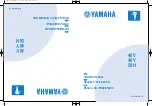
10
2
2
.
.
3
3
P
P
o
o
w
w
e
e
r
r
-
-
u
u
p
p
t
t
h
h
e
e
D
D
E
E
0
0
-
-
N
N
a
a
n
n
o
o
B
B
o
o
a
a
r
r
d
d
The DE0-Nano board comes with a preloaded configuration bit stream to demonstrate some
features of the board. This allows users to see quickly if the board is working properly. To power-up
the board two options are available which are described below:
1. Connect a USB Mini-B cable between a USB (Type A) host port and the board. For
communication between the host and the DE0-Nano board, it is necessary to install the Altera USB
Blaster driver software.
2. Alternatively, users can power-up the DE0-Nano board by supplying 5V to the two DC +5
(VCC5) pins of the GPIO headers or supplying (3.6-5.7V) to the 2-pin header.
At this point you should observe flashing LEDs on the board.
Summary of Contents for De0-Nano
Page 1: ...1 ...
Page 4: ...4 9 3 Revision History 155 9 4 Copyright Statement 155 ...
Page 44: ...44 Figure 6 5 Browse to find the location Figure 6 6 There is no need to test the driver ...
Page 90: ...90 Figure 7 14 Add NIOS II Processor ...
Page 93: ...93 Figure 7 17 Rename the CPU 1 Figure 7 18 Rename the CPU 2 ...
Page 98: ...98 Figure 7 23 Add On Chip Memory ...
Page 100: ...100 Figure 7 25 Update Total memory size ...
Page 102: ...102 Figure 7 28 Update CPU settings ...
Page 104: ...104 Figure 7 30 Add PIO ...
Page 106: ...106 Figure 7 32 PIO 21 Rename pio_0 to pio_led as shown in Figure 7 33 Figure 7 33 Rename PIO ...
Page 113: ...113 Figure 7 43 Input verilog Text Figure 7 44 Open DE0_NANO_SOPC v ...
Page 146: ...146 Figure 8 16 Display Progress and Result Information for the SDRAM Demonstration ...
Page 150: ...150 Figure 9 3 Select Devices Page ...
Page 151: ...151 Figure 9 4 Convert Programming Files Page ...











































